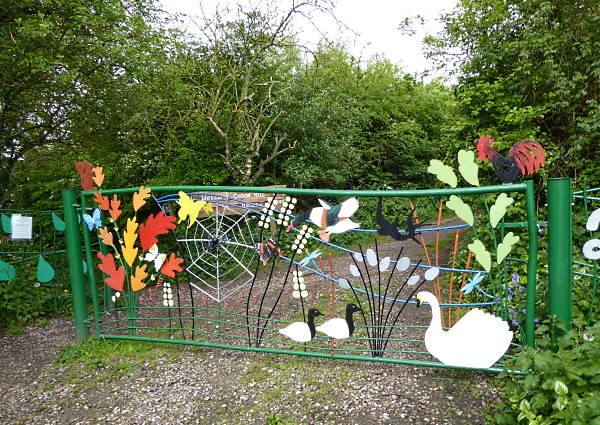
According to the Celts, the first day of May was Beltane, the first day of summer, when they started new fires, drove their cattle between two bonfires then led them out to summer pastures. It didn’t feel much like summer as we walked up Long Lane, Aughton towards Gorse Hill Nature Reserve. It was cloudy, damp and drizzly, and the garden trees dripped on us as we passed. They were lovely trees, though. The classic spring trees were blossoming – Horse Chestnut, Laburnum, Rowan, Whitebeam, Lilac and Hawthorn. Some of the early foliage was magnificent too, including this lovely Copper Beech and a Sycamore of the late-greening variety ‘Brilliantissimum’.
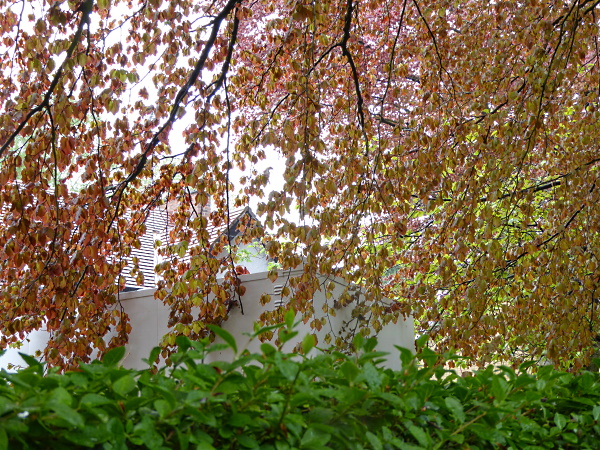
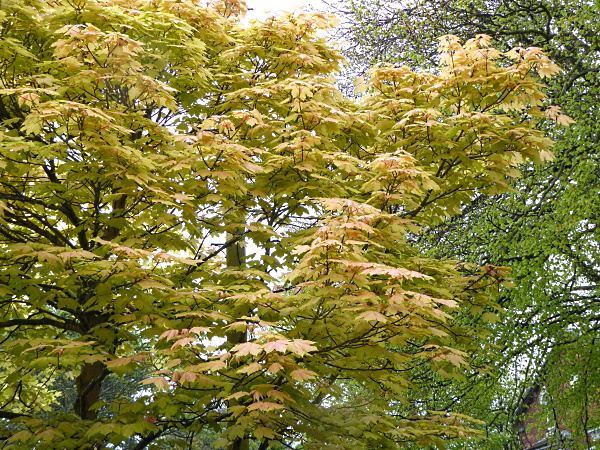
Gorse Hill NR was open for their “Blossom and Bluebells” day, and we walked some of the woodland paths before they officially opened at noon. Wildflowers were abundant along the edges, including White Dead-nettle, Herb Robert, Yellow Archangel, and some early Cow Parsley. Birds included Blackbirds, Robins and some singing Chiffchaffs. The Hawthorn or May blossom was out everywhere.
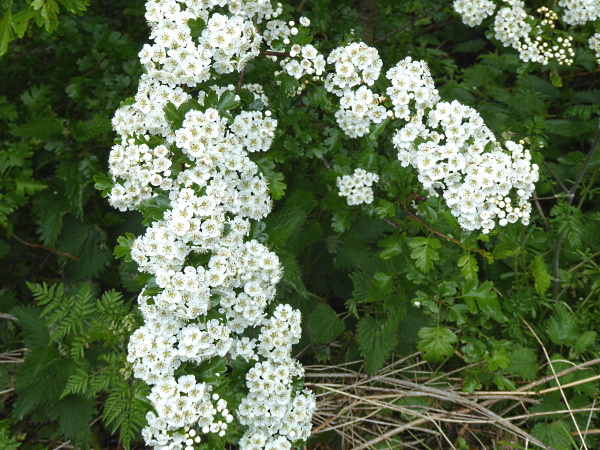
We lunched at Seldon’s Pond, spotting a Sparrowhawk cruising overhead. A minute or two later it came back, flying low and fast, chasing something, but we didn’t see what it was hunting. Then we assembled outside the café for the guided walk led by volunteer Su. She took us into the normally-closed Wilowbank Wood, former farmland which was planted with trees in 1996 and 1997 and had its hedgerows restored. Part of the area was crossed by a small stream and an old bank of native English bluebells, which is what we had come to see. It is still thought to be growing pure English bluebells, although the pollen from the invasive Spanish bluebells wafts in on the wind from our gardens, and is brought in by wildlife.
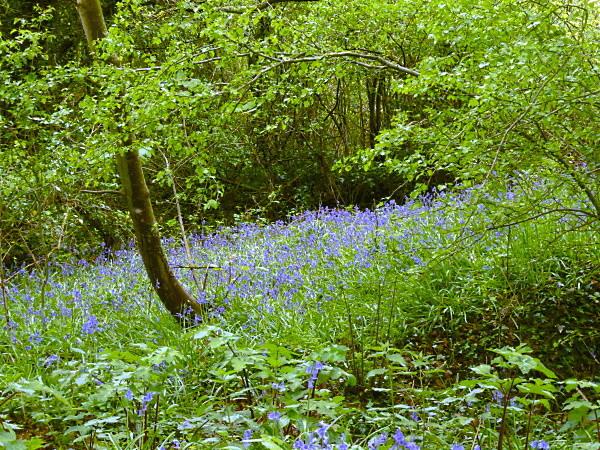
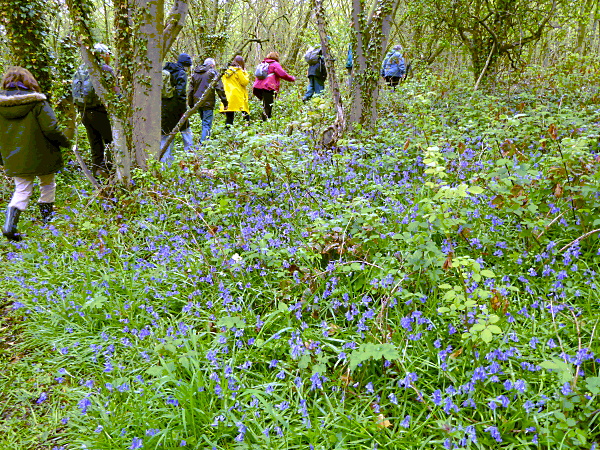
There are Roe Deer in the wood, but we didn’t see any signs of them. They also have a pair of Great Spotted Woodpeckers who have taken a liking to the electricity pole and have excavated many nest holes in it. The reserve staff are watching closely, hoping the pole doesn’t get hollowed out, causing it to fall and the electricity to be disastrously disrupted.
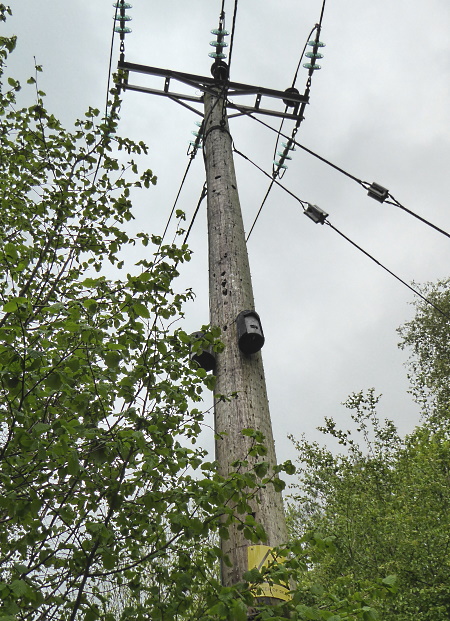
We ended our tour in their heritage orchard, whose blossom was mostly over, but the carpet of Cowslips growing beneath the trees was lovely. Cowslips are the food plant of the Duke of Burgundy Fritillary butterfly.
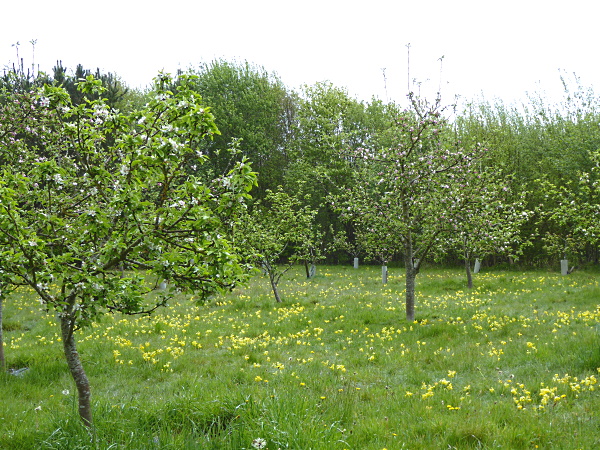
Finally, we went to see the rare native Wayfaring Tree Viburnum lantana, which I have mentioned before. (See the last section of my report on Allerton Towers on 13 Sep 2020). The multi-stemmed group on north side of the path was very sparsely leafed, with no sign of flowers, but there were some younger saplings on the opposite side in better light. It was still too early for full flowers, but the buds were well-formed.

In other tree news, I was on the MNA short walk in Newsham Park last Wednesday (27th April) and found what I believe to be a Wild Service Tree Sorbus torminalis, another rare native tree and another lifer for me. I was actually looking for the even rarer Service Tree of Fontainebleau (was Sorbus latifolia, now called Karpatiosorbus latifolia) which is said by the Tree Register to have several examples along the Gardener’s Drive / Carstairs Road avenue, one of which was a height champion. I thought I had found one of the ones I was looking for, but after consulting several tree books I can’t make it “Fontainbleau” and it seems to be a straightforward Wild Service Tree, although rare enough. If you want to see it, it’s near the café and toilet block, opposite the skatepark and just west of the permanent table-tennis table. It’s on the south side of the path and is a leaning tree, which brings the leaves and flowers conveniently close.
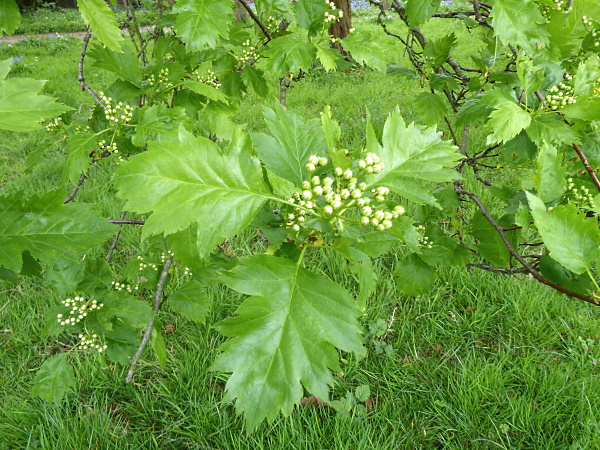
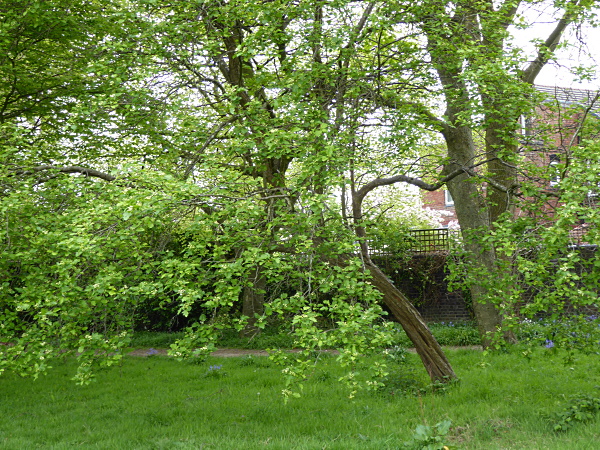
Public transport details: Train from Central towards Ormskirk at 10.07, arriving Aughton Park Station 10.45. Returned from Aughton Park on train at 3.40, arriving Central 4.10.
